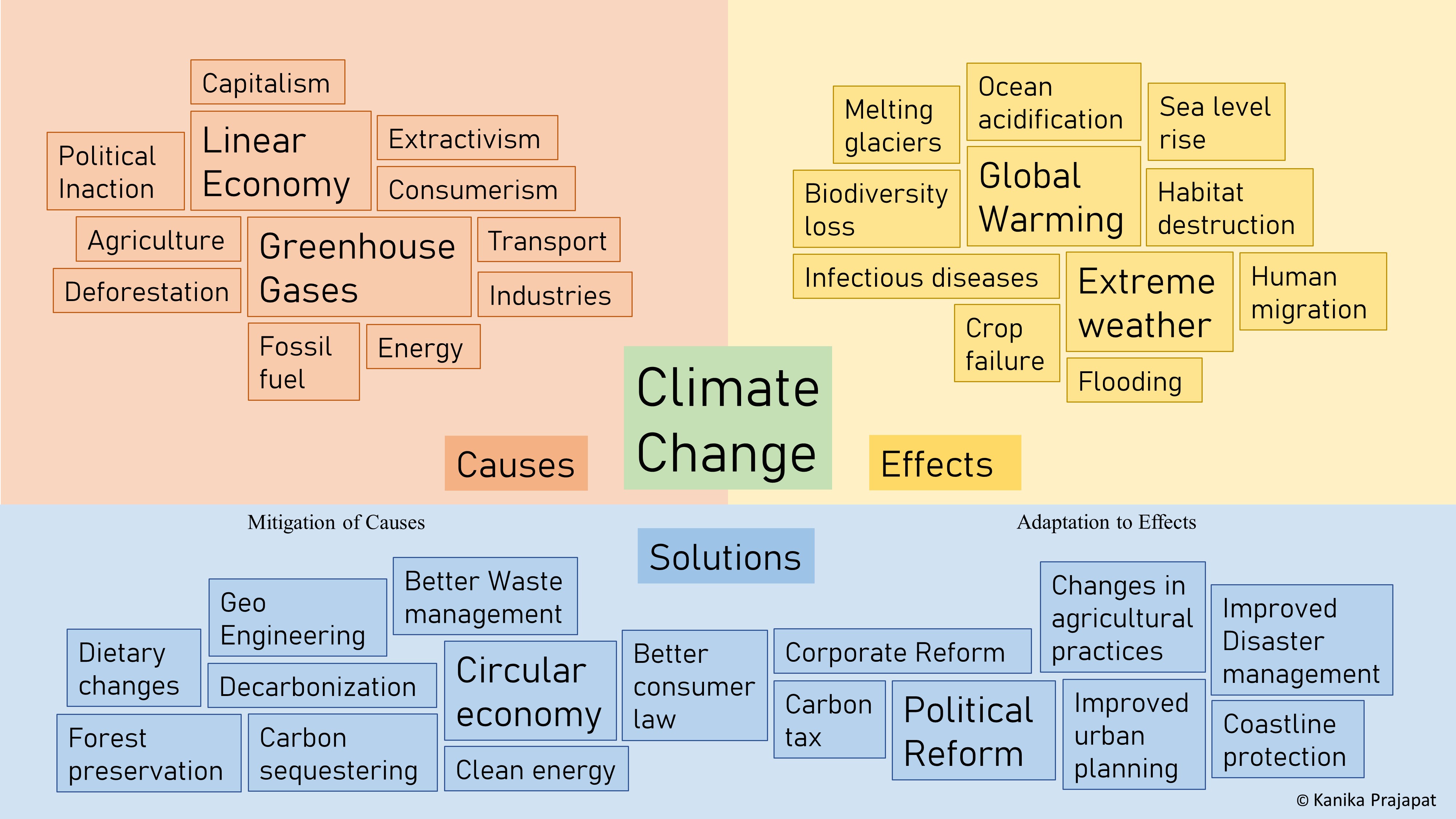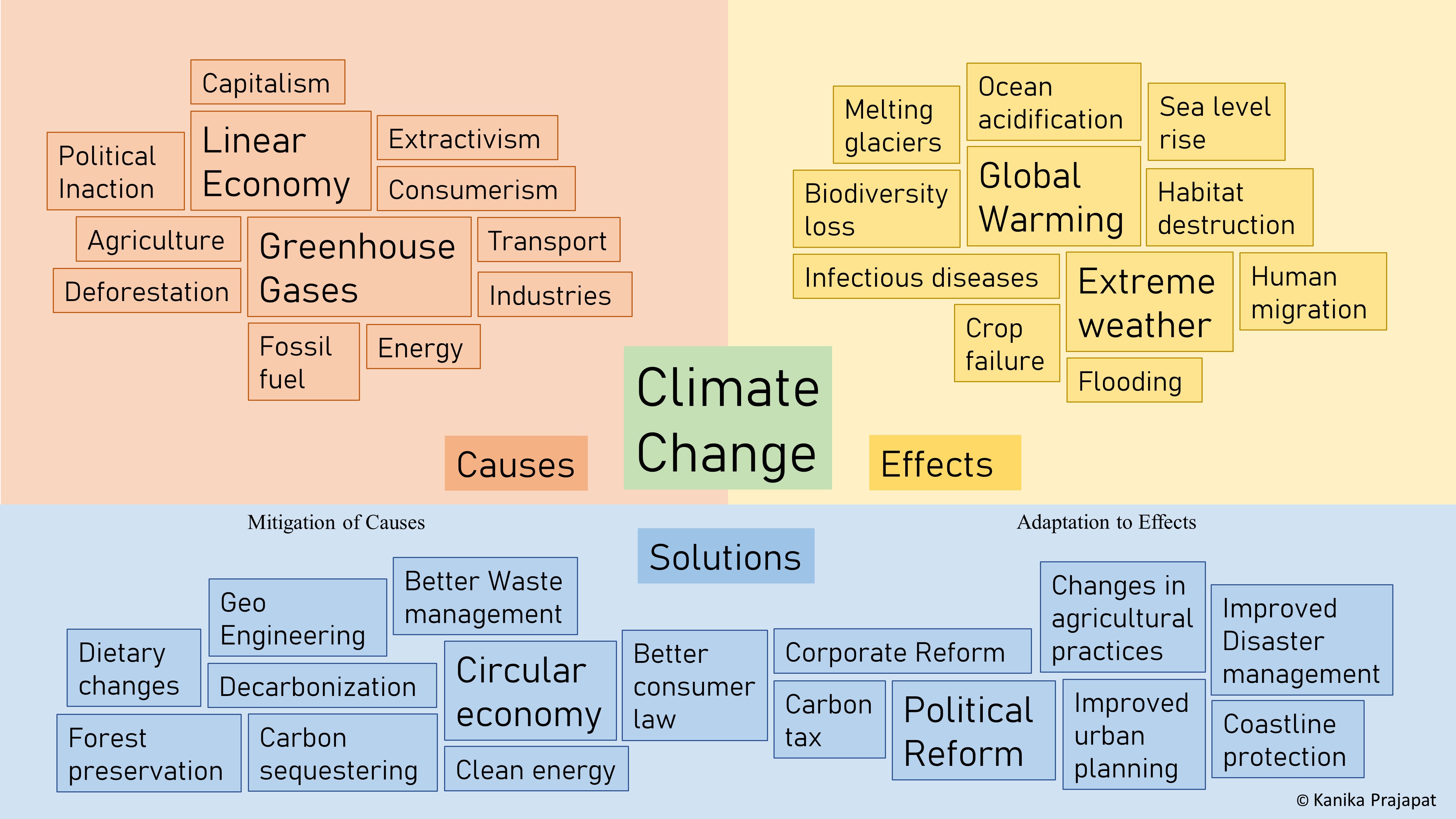
Decoding Green House Gases
The overall picture of Climate Quests
For the past few months, I've been reading extensively on climate change out of sheer interest and at some point I realized, the literature is never going to end, not in this lifetime. The complexity of this subject is so immense; you pick any one aspect of human civilization or natural ecosystem, and there are chances it's connected to climate change in one way or the other.
There are dozen of factors that are impacting climate change, and in turn, climate change is impacting dozens of other things. And then there are some effects of climate change that are contributing to further global warming, called positive feedback loops. For example, as the permafrost and glaciers melt, they release methane and less snow cover also results in less sunlight reflection, both these phenomena cause more global warming and the cycle continues. Educating oneself around this multifaceted problem can be very overwhelming and even confusing sometimes.

So to organize my head as well as this blog, I have tried to categorize all information around climate change into the above three categories, causes, effects, and solutions. Here on, I will explore superficial causes, deeper causes, immediate consequences, far-reaching consequences, short term solutions, and long term solutions in further writings.
Let's start with the Causes
The leading cause of climate change is GHG in the air, but if we dig deeper, the root cause is our Linear Economy, which thrives on capitalism, extractivism, and consumerism. I'll write about these deeper causes maybe next time, first I'll venture into knowing everything about Green House Gases. Let's have a look at these two charts by Our World in Data and try to make a correlation -

Following is a description of each of these greenhouse gas, where they primarily come from, and how dangerous they are -
Carbon Dioxide
It’s easy to notice a pattern in the two charts, 74% CO₂, and 73% emission from energy, well this isn't just a coincidence. Almost all of our CO₂ emissions, 36 billion tonnes of it, come from the energy sector, predominantly by burning fossil fuels. We need this energy in a variety of industries which makes products for human consumption, such as metals processing, minerals processing, chemicals, food processing, paper and pulp, textiles, plastic manufacturing, machinery manufacturing, etc. This industrial emission accounts for 24% of our total emissions.
Fossil fuel-based energy is also used to provide electricity to humans. The electricity we use in our homes, offices, malls, hotels emit CO₂ worth 17.5% of total emission during its generation.
Another significant fossil fuel-based activity is transport. Our cars, motorcycles, trucks, buses, trains, airplanes, ships, and boats, each of these transport carriers use fossil fuel (coal, petrol, diesel or gas) and emit 16.2% CO₂ of our total emissions.
Other relatively smaller CO₂ emitters include energy-based use by agriculture, nuclear plants, cement plants, chemical plants, etc.
The global warming potential (GWP) of CO₂ is considered 1 because it is used as the reference gas to compare other greenhouse gases. Specifically, it is a measure of how much energy the emissions of 1 ton of a gas will absorb over a 100 years of time scale, relative to the emissions of 1 ton of carbon dioxide (CO₂).
Picturing one tonne of CO₂ - Have you ever wondered, how much one tonne of CO₂ actually is? Well, the volume of one tonne CO₂ is 556 m³, now imagine a balloon of 10-meter diameter, if it were to be filled with CO₂, that would be one tonne of CO₂. And we release 36 billion of such balloons every year in our sky!
Methane
Our annual global methane emissions are around 596 million tonnes. Methane largely comes from agricultural activities.
Wetlands such as flooded areas and waterlogged rice fields produce 40% methane through a process called methanogenesis, sort of like fermentation by microbes. Other sources of methane are the decay of organic waste in municipal landfill(<10%), incomplete combustion of forest and agricultural biomass (<10%), leaks during oil and gas extraction, etc.
The warming potential of methane is much higher than carbon dioxide, one tonne of methane is equivalent to 28 tonnes of CO₂. But the silver lining here is, that methane is a short-lived gas, it remains in our atmosphere no more than 12 years compared to CO₂, which can hang around for centuries.
Nitrous Oxide
F gases
Fluorinated gases are man-made gases used in various industrial applications. The most common of them is Hydro-fluorocarbon which is commonly used in our refrigerators and air conditioners as a cooling agent. While they account for only 2% of total GHG emission, these gases are very powerful when it comes to warming potential. F gases are 23000 times more dangerous than CO₂ in warming our planet. Atmospheric lifetime of these gases is between 270 to 50000 years.
Why H₂O didn't make it to the list ??
Just like CO₂ and CH₄ , water vapor is a greenhouse gas, it can trap energy into our atmosphere. In fact, 60% of our day to day warming is due to water vapor and clouds only. Then why, H₂O isn't on the list of troublesome green house gases?
I hope this article was able to fill in the gaps in your existing understanding of Green House Gases. I didn't know half of this information before I started writing this piece. Next up I'll cover a question which has baffled me for so long now, how did we end up here, in this mindless consumeristic, linear economy? If we humans are so intelligent to have invented such amazing technologies, why couldn't we transition into a circular model naturally? See you next Friday with my findings. Stay curious !